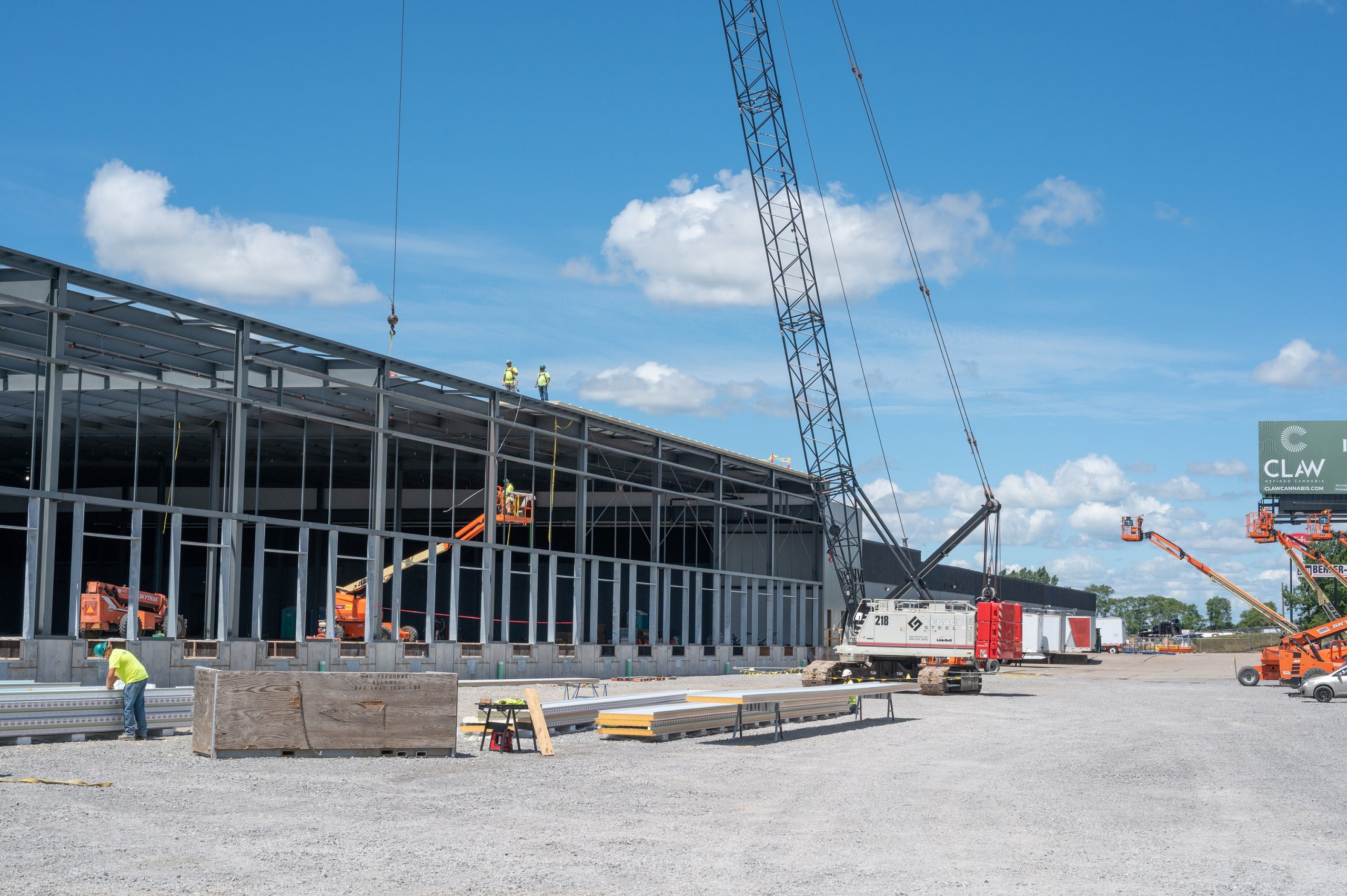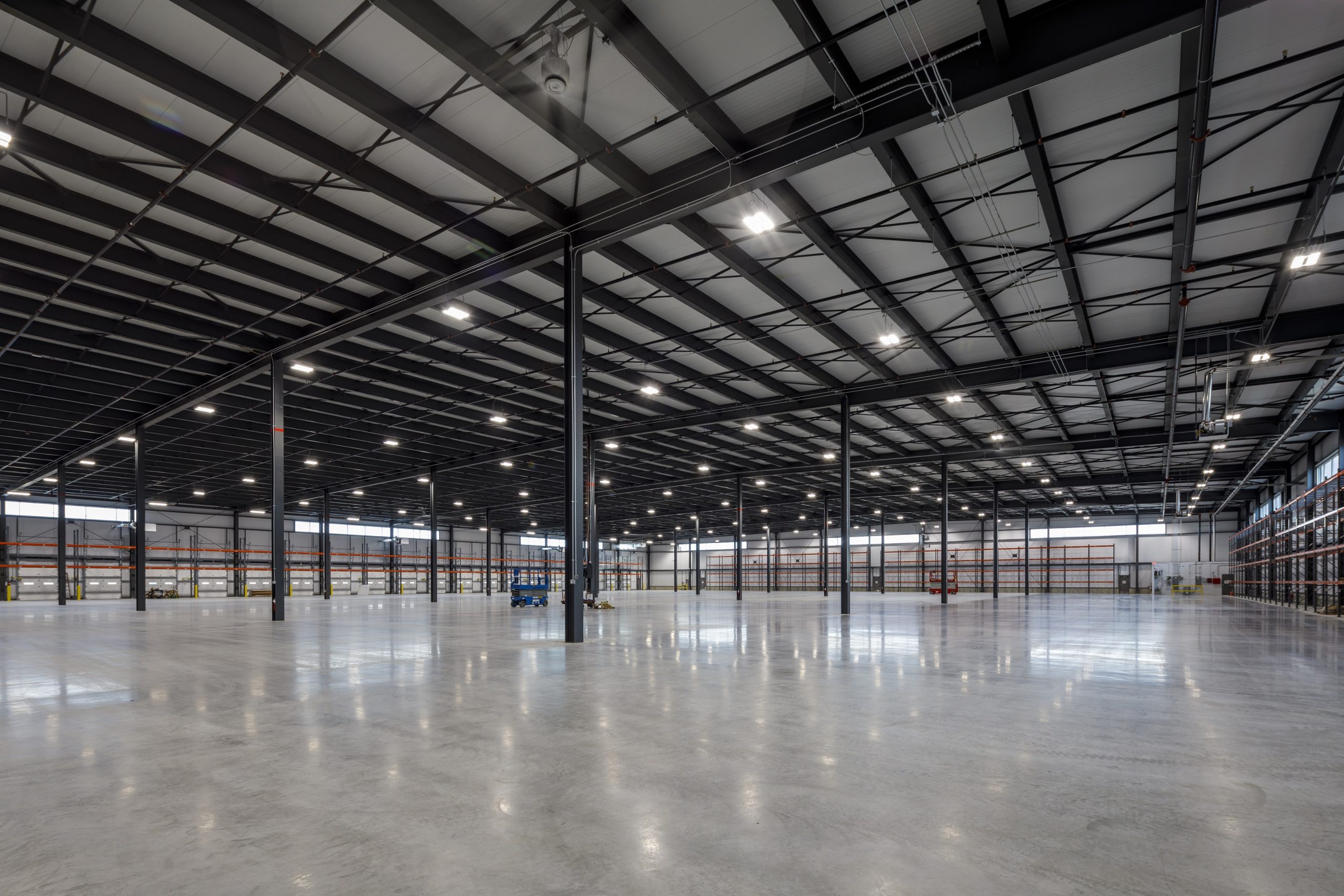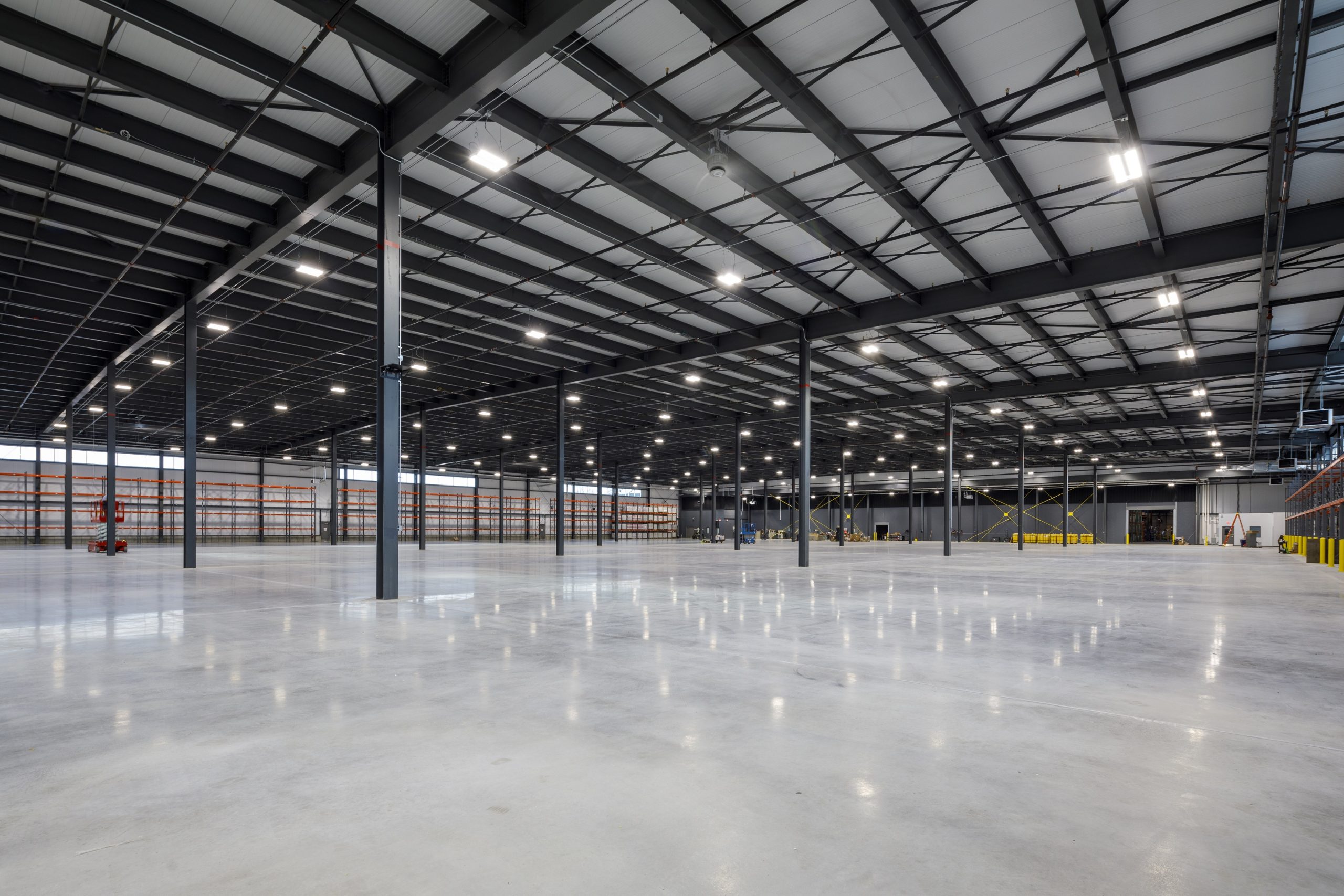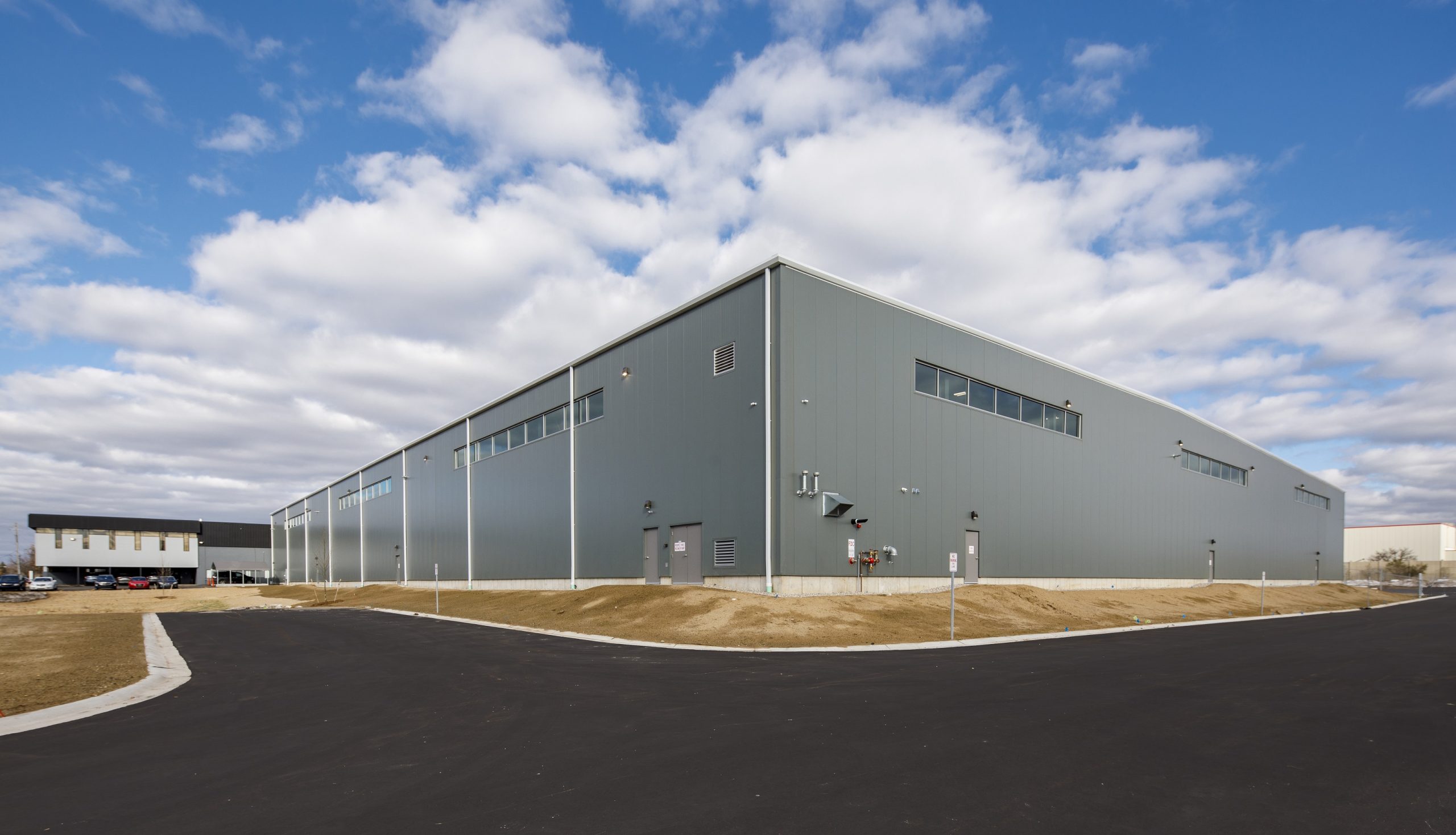The ability to procure construction materials in a timely fashion is a critical effort in every industrial construction project, so when the global supply chain suffered in 2021 and 2022, construction managers felt the effects.
In early 2022, Rockford Construction began building a 100,000 sq. ft. warehouse and racking expansion for Behler-Young, a major distributor for licensed HVACR (heating, ventilation, air conditioning, refrigeration) contractors in Grand Rapids, Michigan. Several products that were specified during the design phase were impacted by delays and disruptions.
Rockford’s team managed a cascading effect of material shortages with high rush production fees by using alternative materials and value-focused design changes to preserve the project schedule while also saving money. In a few situations, sourcing materials from nearby local and regional suppliers helped reduce schedule impacts.
Roofing Materials Solution:
The first schedule impact was on roofing materials, especially TPO and polyiso insulation, which were called for in the design. Those materials were backlogged by 52- to 60-weeks from the producer, which would have caused a significant delay to the project as concrete couldn’t be installed inside the building until the building envelope, including the roof, was completed.
Chad Brown, project manager at Rockford Construction, worked with the design team and the owner to find a solution that would keep the project moving. Brown and the design team realized the roof could be completed using locally sourced materials that were available in a short time frame and would also reduce cost by avoiding premium rush production fees from the TPO roofing supplier.
The solution for the roofing came in the form of insulated metal panels, or IMP, sourced from Falk Panel, a production company of custom IMP materials located less than 15 miles away in Walker, Michigan. The panelized roofing system is non-traditional, but the ability to avoid the expected 52- to 60-week production backlog of the traditional TPO system was critical to keeping the project on track and allowed the flooring system to be installed on time.
“We didn’t expect to use IMP on the roof, but it’s a great product that meets our design criteria and kept us on schedule,” Brown said. “Falk Panel was a great partner in working with us to create a robust roofing solution that met our schedule expectations at a competitive price.”
Roof structure change leads to fire protection design changes, savings:
In addition to supply chain challenges with the roofing material, the designed solution for the roof structure used traditional joist and deck construction methods, which were in short supply and had long production delays and backlogs which threatened the project schedule. Rather than pay premium rush production charges to a non-local joist and deck supplier, Rockford and the design team learned that availability of beam and girder construction materials was just a few weeks. Though the beam and girder approach is typically more expensive, the rush fees on joist and deck made the change financially sensible. Major savings for the owner were also discovered when Brown confirmed the new roofing structure allowed for a major change to the building fire protection plan.
With the typical joist and deck design, the building would have required an ESFR, or early suppression fast response fire suppression system, which would have required approximately 1,500 sprinkler heads to meet code requirements. With the new beam and girder roof design, code requirements could be met with a simpler control mode head system that required approximately 600 heads, saving the owner approximately $500,000 in fire suppression costs.
The roofing design changes also allowed all of the HVAC units to be moved from the high-bay portion of the warehouse to a low-bay section, removing all penetrations into the high-bay area which reduces the likelihood of any leaks.
Savings from Flooring Materials:
Because this facility is used as a warehouse, specific floor requirements were included in the specifications to withstand machinery demands and meet flatness requirements for racking systems. To meet these standards, Rockford proposed building a floor made with Ductilecrete® engineered flooring system, which uses synthetic fibers in the concrete to reduce the amount of rebar needed for support, allows lower maintenance costs for the owner, and greatly reduces the number of required floor control joints which improves layout and flexibility options. However, the specialty flooring system requires specific subgrade deflection standards, which would’ve required trucking in approximately $300,000 worth of additional crushed concrete. Again, Brown thought outside the box and suggested utilizing a geogrid system which provided reinforcement and stabilization when used with properly sized aggregate fills. The geogrid system was sourced from Tensar, a geogrid provider, and allowed the soils to meet deflection standards without the additional aggregate cost.
The results was a Ductilcrete® floor that saved the owner approximately $100,000 in the cost of rebar that was removed from the design, and a floor that exceeded the design specification of measurements for both floor flatness and floor levelness. It’s expected that the floor will provide better performance to the owner, while requiring less maintenance.
Project Impact:
Overall, supply chain challenges threatened to impact concrete installation, roofing structure availability, roofing membrane availability and the overall schedule and budget of the project at Behler-Young. By using innovative design approaches and alternative means and methods, Brown and the Rockford team were able to deliver a project that was on-time and under budget.
“This project was challenging from a supply-chain standpoint, but we were able to come up with innovative approaches and materials changes to meet the schedule we were given by the client,” Brown said. “Our team was able to bring the project under budget and in on-time despite some of the most significant challenges we’ve ever seen in the construction industry.”
previous Project
previous Project






